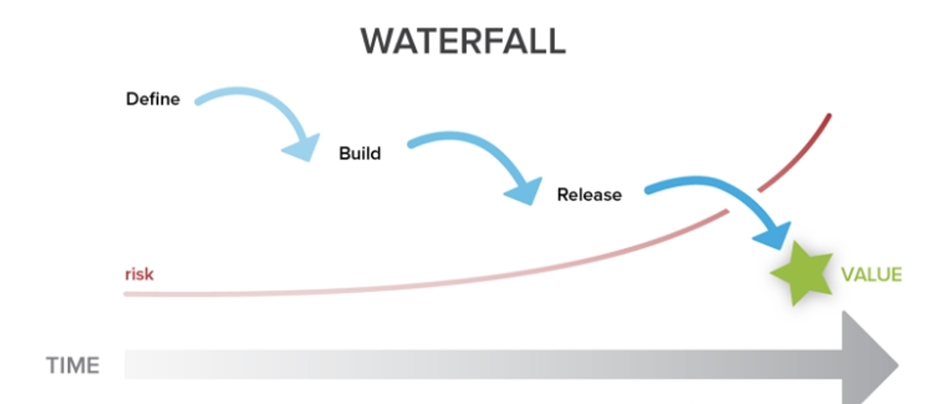Show Me the Money: How to Raise Money for Your Tech Project
In this series on the tech world, we offer our knowledge and expertise to help you find money for your tech idea. In our first blog, we covered important terms in the tech world that you need to know. Now, in our second of three blogs, we turn to raising money.
Many people assume that in order to access tech funding, you must have a for-profit company. There is some merit to that; if you are planning to develop your concept/product under a for-profit company, you may want to consider going the traditional startup route. You can learn more about this path via the wealth of information online for traditional start-ups - check out YCombinator’s website as a starting point. If, on the other hand, you want to raise money for your idea as a non-profit (or as a program that is part of a non-profit), you can still access tech funding via tech philanthropy.
In order to understand why and how tech philanthropy can help, it’s important to talk about the differences between traditional program development and funding and tech product development and funding. In traditional non-profit programs, an organization might conduct a needs assessment and then apply for funding to run a program based on the findings of the need assessment. (This is equivalent to the “define” and “build” stages in the graphic below.) The funding proposal will most likely include the plan for program implementation, from start to finish. There are often cohorts of participants that start and finish the program, and programs usually use curriculum that have a linear structure. Although there may be small changes to a program during implementation, it generally runs as outlined in the grant proposal (akin to the “release” portion of the graphic) and data is collected throughout the program. By the time the program is done, the hope is that it has provided value to participants and to the organization.

In contrast, as you saw in last week’s glossary, tech funding and product development doesn’t require a finished product, or even a finished plan, right away. Instead, if done well, the team’s time is spent on learning their end users’ needs, developing concepts for solutions, testing those concepts, refining them, and testing again. Instead of a linear structure, tech product development is cyclical and phased (as seen in the graphic below). If the team developing the product is really listening to their potential users, this development process will often involve significant changes to their original concept. And the process will continue once a product is launched, creating an ongoing cycle of learning and changing. This process necessitates a very different structure for engagement with users. A tech product may be adding new users all the time and may not be able to gather the same amount of information about them, making outcome data more difficult to gather.

Returning to the funding, traditional philanthropy is often not structured to fund the kind of program design and outcomes that tech product development requires. This is where tech philanthropy comes in. Tech philanthropy has two main categories: tech companies who have a philanthropic arm, or venture capitalists who, either individually or as a group, donate to charitable work.
Tech philanthropy is often more open to funding innovation and early stage ideas because tech philanthropists have experience in this area and understand how product development works. Instead of funding a local program that will serve a few hundred people, they look for ideas that are disrupting already existing ways of doing things or that will scale to hundreds of thousands or millions of users.
Often, they are also funding in their area of expertise. For example, Twilio, a communications company, funds non-profits using communication tools to make an impact. Foursquare has a fund for products that use location-based technology. Some tech philanthropy also has areas of interest. Facebook funds education-related work, for example.
As with any funder, it’s important to get to know what a tech funder generally funds and how they think about their work. When you’re applying for tech philanthropy funding, you should be prepared to talk about, and even demonstrate, how you are:
- Thinking big - you should want to grow your product/solution to reach a large number of people and you should have a vision for what that looks like.
- Making plans for scale - you’ve thought through what your idea looks like at 100, 10,000, and 100,000 users.
- Talking extensively to your potential users - you aren’t wireframing alone but are actively seeking out users and iterating on your ideas.
- Figuring out what metrics you need to track - how are you measuring your success? When will you decide something isn’t working?
- Keeping it simple - you are working towards an MVP that is focused on the biggest need and not trying to do too much.
The good news is that there are more tech funders every day who are looking to fund innovative and impactful projects. Here (in alphabetical order) are some you might want to check out.
- Adobe Employee Community Fund
- Amazon Web Services Imagine
- Apple Entrepreneur Camp
- Atlassian Foundation
- Chan Zuckerberg Initiative (Facebook)
- Foresquare for Good
- Google.org
- Hello Alice
- Mozilla
- Salesforce Ventures (education focused)
- Schox Philanthropy
- TD Ready
- Tech Forward Technology Innovation Award
- Twilio.org
- Unorthodox Philanthropy



